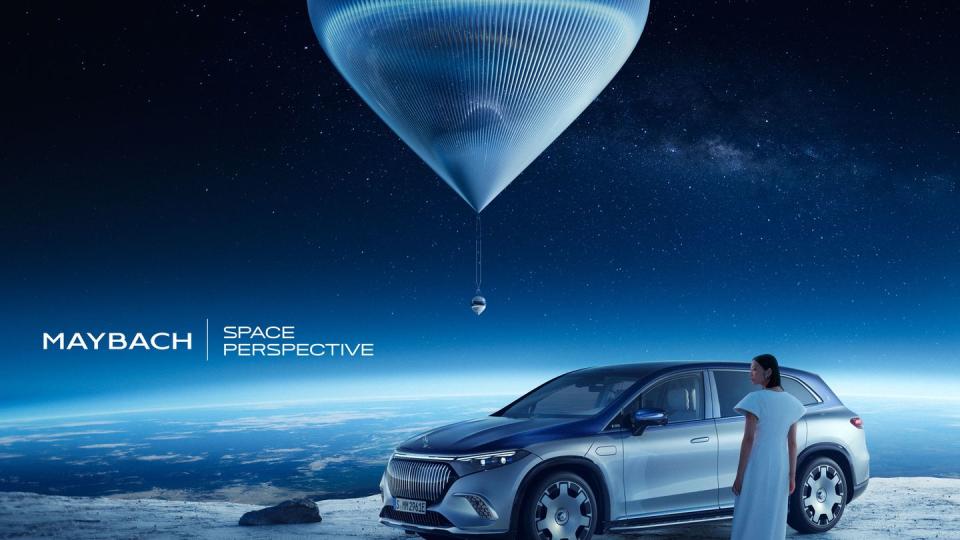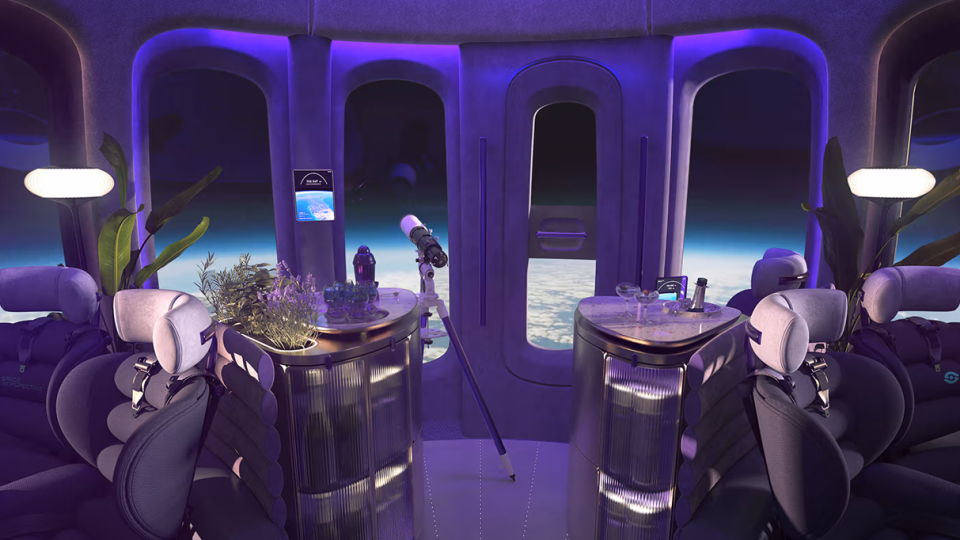Mercedes-Maybach Back in the Blimp Business, but This Time Heading to Space

Mercedes-Maybach vehicles will transport space passengers on the ground on their way to their Space Perspective balloon flights. Beyond that, Maybach’s role in the venture is unclear.
The Space Perspective craft is named Spaceship Neptune, consisting of a pressurized capsule that hangs beneath a hydrogen-filled balloon.
The whole system has already flown, albeit without any passengers. They’ll have humans inside one by the end of the year, with paying humans by the end of 2024.
When we think of Maybach—and most of you are pretty brand-savvy here—we think of the EQS, GLS SUVs, or maybe even the 57 and 62 sedans of a dozen or so years ago. Some may think all the way back to the DS-8 luxury coaches of the 1930s. But Maybach goes even further back than that, and higher up.
Maybach Motorenbau GmbH once built engines for the Luftschiftbau Zeppelin GmbH, or German Airship Company. In WWI Maybach made straight-six engines that powered the Schutte-Lanz and Parseval airships. By 1924 Maybach was supplying the US Navy’s Los Angeles airship with engines (those were V12s). Those engines later powered both the US Akron and Macon airships as well as the German Graf Zeppelin.
So it’s only natural that Maybach should get back into the airship business, albeit a little more obliquely. “Mercedes-Maybach is partnering with Space Perspective, the world’s first and only carbon-neutral spaceflight experience company,” Maybach announced this morning.
Specifically, Mercedes-Maybach vehicles will transport space passengers on the ground on their way to their balloon flights. Beyond that, Maybach’s role in the venture is unclear.
“Our partnership with Space Perspective will allow space explorers to ride in style on the ground, and for us to extend the highest level of Maybach refinement and brand experience to the edge of space,” said Daniel Lescow, head of Mercedes-Maybach.
The Space Perspective craft is named Spaceship Neptune, consisting of a pressurized capsule that hangs beneath a hydrogen-filled balloon that “offers a safe and transformative six-hour journey to the edge of space.” The altitude quoted by Space Perspective is 100,000 feet.
Eight passengers will ascend in the roomy and luxurious capsule over the course of six hours. They’ll stay up there a while, then descend back to Earth, gently splashing down in the sea. Space Perspective says it’s far more green than the roaring, fire-spewing rockets of certain competitors.
“With no rockets, weightlessness, heavy g-forces or training required, the experience is designed to be as gentle on Explorers as it is on the Earth,” said the company.
“Those who fly with Space Perspective, which is being regulated by the Federal Aviation Administration and follows guidelines established by NASA and the US Coast Guard, enjoy unprecedented views of our planet through the largest windows ever flown to space, a world-class meal and cocktail service, Wi-Fi, and lavatory—all from the comforts of the world’s first Space Lounge.”
The company was founded by two graduates of Biosphere 2—Jayne Poynter and Taber MacCallum. The pair cofounded Paragon Space Development Corporation, “which develops tech for environmental control systems that, for example, can be found on the International Space Station.”

It also made space suits for exploration as high as 135,000 feet, as well as numerous thermal management systems, environmental controls and life-support systems, and many other products used by space technology companies like Northrup Grumman, Boeing, and what appears to be SpaceX.
So that little capsule with the big windows might actually be a safe space, with a great view to boot.
The hydrogen in the big gas bag above the capsule will be sourced with environmental friendliness in mind, though whether that will mean electrolysis from solar electricity or recovery of biomass or something else is not yet clear. “The only reason I’m being cagey is because we’re trying to finalize our sources right now,” Poynter told Autoweek.
The gas bag itself is made of polyethylene and Dyneema—the latter being “the world’s strongest fiber”—it’s used to make climbing slings, for instance. The polyethylene will be “up-cycled into something really cool,” Poynter said. The rest of the system is completely reusable.
How much hydrogen goes in it? “You’re asking very specifically detailed questions that I don’t have answers to,” Poynter said. But we can guess the number will be, “a lot.”
“In rough numbers, when it’s standing on the launch pad, from the bottom of the capsule to the top of the balloon, it is 614 feet,” Poynter said. “And when it’s fully (inflated)… when it’s on the launch pad, it’s long and skinny. And then as it goes off, the gas expands to fill the entire balloon, and it’s about 350 feet in diameter once it gets to space.”
The capsule is polycarbonate. It’s not clear what the windows are made of, but Poynter assures us the view of the horizon will not be arched or wavy. Overall it seems much safer than that doomed submersible we all read about recently. If something does go wrong—say, the gas bag pops—there are parachutes between the capsule and the balloon that will deploy and allow the capsule to float to Earth.
The whole system has already flown, albeit without any passengers. They’ll have humans inside one by the end of the year, with paying humans by the end of 2024. Rides cost $125,000, roughly half of what a Virgin Galactic or Blue Origin flight costs, and for a much longer experience. You can sign up for yours at www.spaceperspective.com.
Would you go to space in one of these? Let us know in the comments below.

 Yahoo Autos
Yahoo Autos 